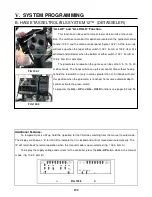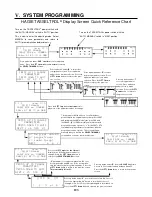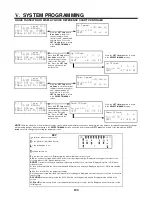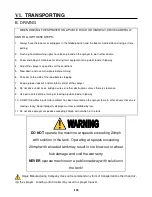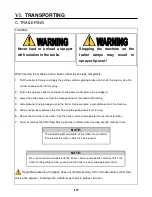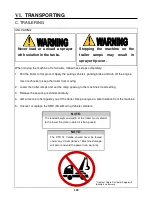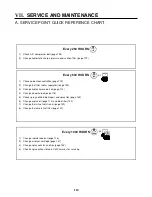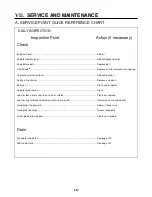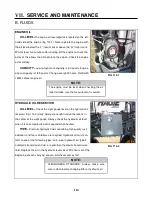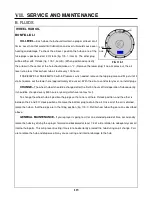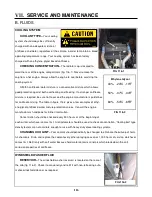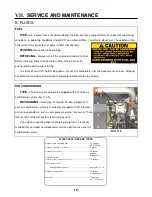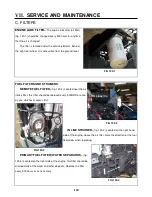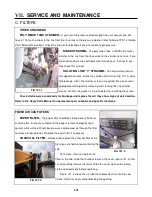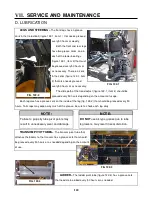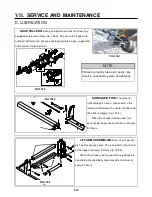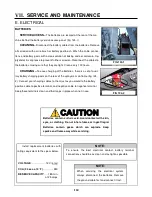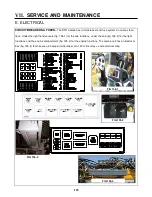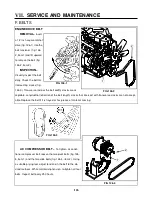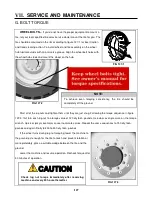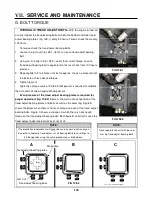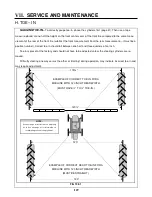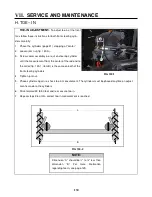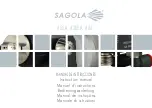
VII.
SERVICE AND MAINTENANCE
B. FLUIDS
116
COOLING SYSTEM
COOLANT TYPE–
Your cooling
system should always be sufficiently
charged with an adequate mixture of
antifreeze and water, regardless of the climate, in order to maintain a broad
operating temperature range. Your cooling system has been factory
charged with an ethylene-glycol based antifreeze.
CHECKING CONCENTRATION–
The radiator cap is located to-
ward the rear of the engine compartment (fig. 116-1). Never remove the
cap from a hot engine. Always allow the engine to cool before servicing the
cooling system.
A 50/50 antifreeze/water mixture is a conservative mixture which allows
good protection against both overheating and freezing. If a stronger antifreeze
mixture is required, be sure not to exceed the engine manufacturer’s guidelines
for antifreeze mixing. The table in figure 116-2 gives a few examples of ethyl-
ene-glycol antifreeze/water mixture protection values. Consult the engine
manufacturer’s handbook for further information.
Concentration should be checked every 500 hours or at the beginning of
each winter, whichever comes first. A refractometer should be used to check concentration, “floating ball” type
density testers are not accurate enough for use with heavy duty diesel cooling systems.
CHANGING COOLANT–
Your coolant should periodically be changed to eliminate the buildup of harm-
ful chemicals. Drain and replace the coolant every other spraying season or 1,000 hours of service, whichever
comes first. Refill only with soft water because hard water contains minerals which break down the anti-
corrosion properties of antifreeze.
FIG 116-2
40% -23ºC -10ºF
50% -37ºC -34ºF
60% -54ºC -65ºF
Ethylene Glycol
FIG 116-1
WINDSHIELD WASHER FLUID
RESERVOIR–
The windshield washer reservoir is located on the rear of
the cab (fig. 116-2). Check it occasionally and refill it with non-refreezing auto-
motive windshield cleaner as required.
FIG 116-2

